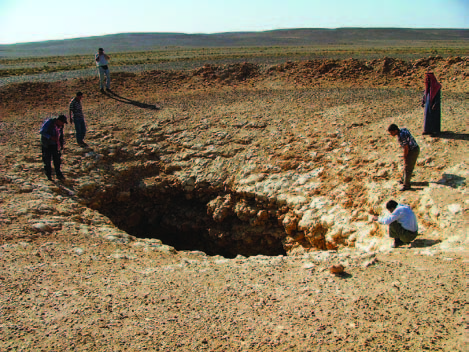Hypogene Point Karstification along Wadi Sirhan Graben (Jordan): A Sign of Oilfield Degassing?
DOI:
https://doi.org/10.3986/ac.v41i1.46Ključne besede:
Jordan, hypogene caves, sinkholes, oil fields, methanePovzetek
Jordan is a country with a large area of limestone. Nevertheless, only a few limestone caves are known. Here we report about two caves along Wwadi Sirhan Graben of Jordan that appear to have formed by stoping upward of collapsed deep-seated hypogene cavities along breccia pipes. The first one, Uwaiyed Cave, is a small breakdown-dominated chamber in basalt of the Naslet Al-Dhirwa volcano; the second, Beer Al-Malabeh, is a large, bell-shaped sinkhole that has geologically recently opened up to the surface. Wwe discuss the possible processes that led to their formation. The review of the existing stratigraphy as obtained by oil well drilling suggests that no salt layers occur below the caves. Gypsum layers seem to be limited to 4 m in thickness, probably not enough to form the observed features. The remaining process is dissolution caused by ascending gas (H2S or CH4) -rich waters from the underlying oil and oil-shale fields. Wwhen such solutions reach the water table, bacterial oxidation may create enough dissolutional power to form localized and large cavities. Their collapse could lead to the observed collapse structures and would explain the paucity of other cave structures throughout southeastern Jordan.
Keywords: Jordan, hypogene caves, sinkholes, oil fields, methane.
Prenosi

Prenosi
Objavljeno
Kako citirati
Številka
Rubrike
Licenca
Avtorji jamčijo, da je delo njihova avtorska stvaritev, da v njem niso kršene avtorske pravice tretjih oseb ali kake druge pravice. V primeru zahtevkov tretjih oseb se avtorji zavezujejo, da bodo varovali interese založnika ter da bodo povrnili morebitno škodo.
Podrobneje v rubriki: Prispevki




